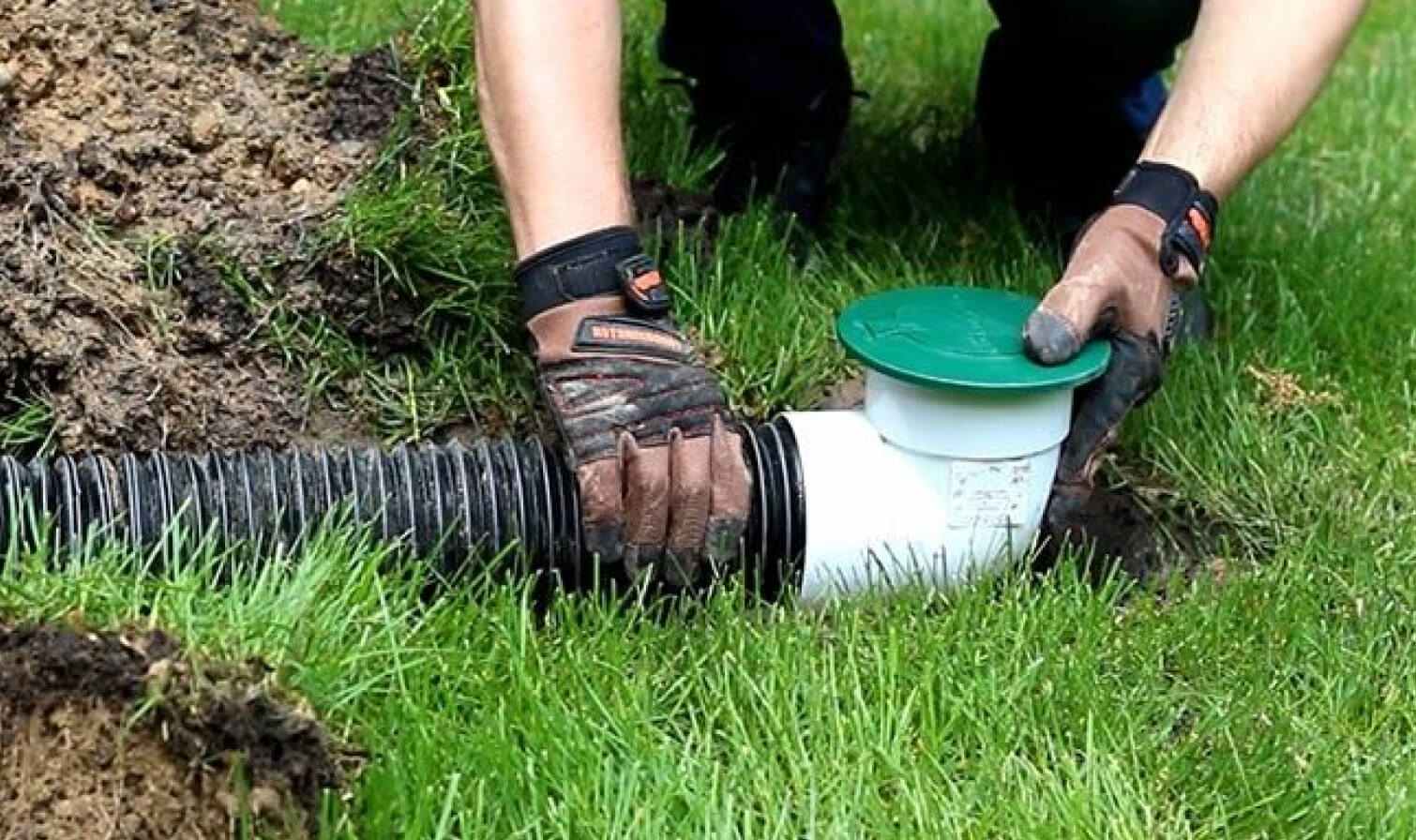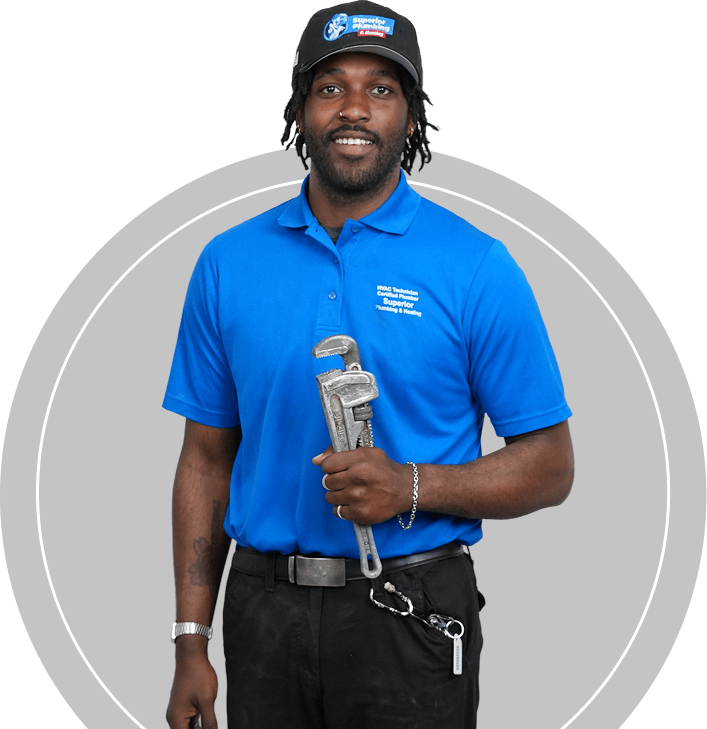What is pop-up drainage in the yard?
We’ve all seen the damage that fast-paced downpours and rainwater can do to homes and gardens, so pop-up drains are the way to quickly, easily, and inexpensively divert large amounts of water away from your home. Pop-up drains are good for diverting stormwater away from your home and garden so it doesn’t damage the soil or foundation. PVC pipes laid under your lawn divert stormwater away from your home, where hydrostatic pressure opens the drain cover, allowing water to escape safely.
Let’s take a closer look at this topic, what pop-up drains are and how they work, as well as how to install a pop-up drain in the yard.
A pop-up drain is a type of drainage system that helps drain water away from your home’s foundation to the outside, where you want to dispose of it. Major people install extensions or splash guards on their gutters to pull water away from the house several feet. But that’s not enough. Water is a powerful destroyer. A fall downpour can wash away flowers in your garden. It can remove mulch and even wash away perennial plants. But worst of all, water can damage the foundation of your home.
There are several ways to drain water away from your home. Surface drainage systems use a series of heavy-duty plastic pipes that start at the base of the gutter. The pipes run underground through your yard and end with a drain that releases water to the outside. Surface drainage systems end with a drain, and there are several types. One type is called a “pop-up emitter.”
Our opinion of pop-up emitters is positive. There are several models, some have springs that hold the cover closed, and some do not. However, lawn mowers create a powerful suction flow that collects the grass clippings – and dries out the covers. Also, frozen drain covers in cold climates can also be a problem. It causes a potentially dangerous chain reaction. When the lid is closed, meltwater from the roof fills the PVC pipe system, then freezes and splits the pipes.
During a downpour, the water flows down the gutter system into the drainage pipe. Under hydrostatic pressure, the cover opens and drains the water away from the foundation. Once the flow subsides, the cover closes until the next heavy rainfall. Retractable emitters are good because the lid stays closed when there is no constant flow of water. This means no debris gets into the pipe. This is a great alternative to traditional drain grates, which tend to accumulate rocks, dirt, or leaves that clog the pipe over time.
Consider installing pop-up drains if:
- Your soil doesn’t drain well.
- You have grading problems that prevent water from draining away from your home.
- Your gutter design drains too much water into one area.
- If you are likely to have drainage problems, invest in pop-up drains or, if necessary, more reliable ones such as French drains. It’s worth the time, effort, and money spent.
If you think that such a system will benefit you, that’s a reason to contact Superior Plumbing & Heating! We have been in the market for a long time and have over 35 licensed plumbers and 24/7 customer service 365 days a year. Our professionals’ years of experience guarantee that the work will be done to the highest standard, and most importantly, our company provides a warranty on the work performed. Our employees are trained and licensed, as a plumber is a very responsible profession that requires special skills.
How to repair a drainage pipe?
If your underground drainage pipe breaks, it can cause flooding and serious damage to your home. Some homeowners prefer to solve plumbing problems themselves. But repairing drain pipes is not an easy thing to do. If you suspect the pipe needs to be replaced, you should call a professional plumber. He will be able to assess the situation and determine the best way for drainage pipe replacement.
There are several steps you need to take to fix a broken underground drainage pipe. The first step is to locate the location of the break. Once the break is found, the crew should use a camera to inspect the area for obstructions or damage. If there are any problems with the pipe, such as rocks or roots, they will have to be removed before repairs can begin.
Once the obstruction is removed, a trench must be dug around the break and then filled with concrete. This will help prevent water leakage and also provide support for the pipe during the repair. Once the concrete has been set, a covering of metal mesh should be placed on top of it to keep debris from entering the trench and causing additional damage. Finally, new drainage pipes need to be installed in accordance with local codes and regulations.
We also use a repair method known as trenchless repair. Instead of digging up your yard, a plumber can use trenchless technology to access the drain pipe. They can use an overlay to repair the pipe without digging deep holes in your lawn. For a trenchless repair to be effective, the plumber must use a video surveillance system to see the inside of the pipes. He can use the visual data to determine the location and extent of the damage. The plumber then inserts the pipe and patches it to the desired depth. He inflates the pipe, and the liner is attached to the inside. Eventually, the liner hardens, and the pipe remains undamaged.
What are the alternatives to the pop-up drain?
We want to present you with an alternative to the pop-up drain – the grate and French drain.
Pop-up drains vs Grate
The grate is also part of the drainage. It plays the role of protector of the drainage system. When a grate is installed over the drain, it protects the drainage pipe from clogging with solid debris because it acts as a separator.
The difference in the installation of both types of drainage equipment
The installation process is also different. Installing a pop-up emitter is pretty simple. Simply install the pop-up emitter on the drain pipe.
Installing the grate is not as easy as installing the pop-up emitter. It is necessary to make a frame over the drain pipe and then attach the grate to the frame by tightening the screws.
Permissible temperature for both types of drainage equipment
Temperature is a big problem for a drainage system because water turns to ice at temperatures below freezing.
In the winter, the pop-up emitter cannot tolerate temperatures below freezing. The pop-up emitter stops draining the drainage material. Because the grate stays on top of the pipe, it can perform better than a pop-up emitter.
A comparison of the benefits of both types of drainage equipment
Both drainage devices have significant advantages. Let’s start with the pop-up emitter. The pop-up emitter is easy to install, not expensive, and can fit into a landscape design.
Drainage emitters also have some great advantages. It’s value for money, it’s easy to clean, and it protects your drainage pipe from clogging with heavy materials.
Suppose you differentiate between a pop-up emitter and a grate in terms of price. It should be said that a pop-up emitter costs less than a grate. But a great is value money. You can pay that much money for it because it is durable and keeps your drainage system from clogging.
Pop-up drains vs French drains
French drains are trenches covered with gravel or stone. They contain a perforated pipe that redirects surface water from a particular area to a septic tank or drain field. In most homes, French drains are built around the outer sides of the foundation or installed under the basement floor along the inner perimeter of the basement.
This way, during heavy rains, your house is protected from collecting subsurface water, and water is diverted away from all areas of your property that are underground. French drainage systems can usually operate unchanged for a long time, but they do require regular inspection. A clogged French drainage pipe can lead to basement flooding and other problems.
Why are there problems with drainage and how to solve them?
In order to make the drainage system work effectively and not have a drainage problem, it must be properly designed. The occurrence of errors can lead to the fact that the coming water will not be completely drained. If any deficiencies in the existing drainage system have been detected experimentally, they must be corrected.
- Freezing
In winter, the pop-up emitter can freeze through the flow of water from the gutter. This happens in the presence of standing water. There is a risk of freezing on warm winter days. If the snow on your roof melts but on the ground below the pipe, the water may become trapped and freeze again as the temperature fluctuations. The emitter will spread the water as long as there is enough to start the system.
- Solution
You can use gutter heating with a heating cable. The heating cable adjusts to the ambient temperature to keep the pipe warm enough.
- Water is not taken off the property
Usually, the water can be taken off the plot to the side of the slope location. As a result, it ends up in a ditch, ravine, or body of water located not so far from your property. If it is impossible to remove water from the site for one reason or another, you need a local drainage system.
- Solution
Some volume of wastewater can be drained into water-absorbing wells made on the site. They are filled with crushed stone, broken bricks, gravel, or other materials, and the top is covered with geotextile and soil.
To avoid repeating the above mistakes, trust the installation of drainage systems to our professionals, and you will get confidence in the future!

 Call us and we’ll come to you
Call us and we’ll come to you 









